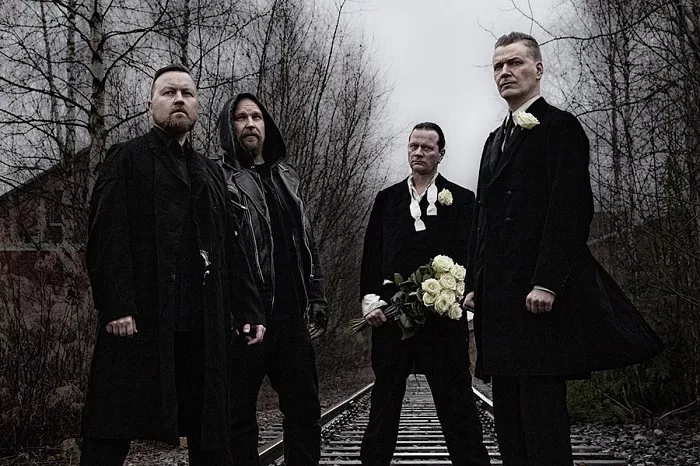Death metal has long been a defining genre within the heavy metal scene. Known for its aggressive sound, intricate guitar work, and guttural vocals, it has garnered a loyal fan base since its inception. With roots tracing back to the late 1980s, the genre has undergone significant changes over the years. As we explore what comes after Death Metal DC, we will delve into its evolution, subgenres, and the impact it has had on the broader metal community.
The Origins of Death Metal
The Birth of a Genre
Death metal emerged from the heavy metal and hardcore punk scenes. Bands like Death and Possessed were pivotal in shaping its sound. They combined fast tempos, heavy guitar riffs, and growled vocals. The genre took shape in the United States, particularly in Florida and California. Early death metal bands experimented with dark themes and complex structures, paving the way for the genre’s future.
Influences from Other Genres
Death metal did not evolve in isolation. It drew influences from thrash metal, black metal, and even classical music. The intricate solos and harmonies can often be traced back to classical music traditions. Thrash metal contributed to the speed and aggression that characterizes death metal. Bands like Slayer and Metallica influenced the genre’s early musicians.
The Death Metal Scene
Key Bands and Albums
Several bands stand out in the history of death metal. Death’s album “Scream Bloody Gore” is often considered one of the first death metal albums. Similarly, Morbid Angel’s “Altars of Madness” is another seminal release. These albums set high standards for musicianship and lyrical themes within the genre.
The Rise of Technical Death Metal
As the genre grew, so did its complexity. Technical death metal emerged, featuring intricate song structures and challenging musicianship. Bands like Necrophagist and Obscura pushed the boundaries of what was musically possible. Their emphasis on technical proficiency attracted a new generation of fans.
The Evolution of Death Metal Subgenres
Melodic Death Metal
One of the most notable subgenres is melodic death metal. Originating in Sweden, it combines the heaviness of death metal with melodic elements. Bands like In Flames and At the Gates are key players in this scene. Their sound features harmonized guitar melodies and clean vocals alongside growled vocals.
Brutal Death Metal
Another important subgenre is brutal death metal. This style emphasizes extreme heaviness and aggression. Bands like Cannibal Corpse and Suffocation are known for their brutal sound. Their music often includes fast drumming, complex time signatures, and graphic lyrical content.
Deathcore: The Fusion of Genres
Deathcore is a fusion of death metal and metalcore. This subgenre gained popularity in the 2000s. Bands like Suicide Silence and Whitechapel exemplify this blend. Deathcore features breakdowns and a mix of growled and screamed vocals. The result is a sound that appeals to both death metal and metalcore fans.
The Cultural Impact of Death Metal
Death Metal in Popular Culture
Death metal has permeated popular culture in various ways. Films, video games, and merchandise have all incorporated elements of the genre. The visual aesthetic often includes dark imagery and macabre themes. This representation has helped to broaden the audience for death metal.
The Death Metal Community
The death metal community is known for its inclusivity. Fans often bond over their love for the genre. Festivals and concerts provide opportunities for fans to connect. The sense of community is strong, with many forming friendships through shared musical interests.
What Comes After Death Metal DC?
The Evolution of Death Metal
As we look to the future, death metal continues to evolve. New bands are emerging, pushing the boundaries of the genre. Innovations in technology allow for new sounds and production techniques. This evolution ensures that death metal remains relevant in the ever-changing music landscape.
Influences from Other Genres
Future death metal bands may draw inspiration from a wider array of genres. The rise of electronic music and hip-hop could lead to unique fusions. These influences could create a new wave of death metal that is both innovative and exciting.
Globalization of Death Metal
The globalization of music has also impacted death metal. Bands from around the world are now contributing to the genre. Countries like Brazil, Japan, and Sweden have vibrant death metal scenes. This globalization brings new influences and styles into the mix, enriching the genre further.
See Also: What Did 80s Heavy Metal Music Sound Like?
Conclusion
Death metal has undergone a significant transformation since its inception. From its origins in the late 1980s to its current state, the genre has evolved through various subgenres and styles. The emergence of melodic death metal, brutal death metal, and deathcore has expanded the genre’s reach. Moreover, the influence of death metal in popular culture and the strong community it fosters demonstrates its lasting impact. As we look to the future, the evolution of death metal is sure to continue. New bands will emerge, pushing the boundaries of what is possible within the genre. The global nature of music today will only serve to enhance and diversify death metal’s sound. This genre, born from rebellion and innovation, will undoubtedly thrive in the years to come.
Related Topics

